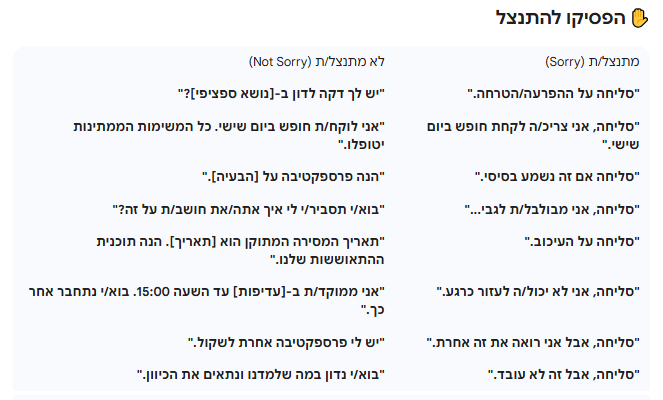Ensuring that the Unique Value Proposition (UVP) remains aligned with changing customer needs and market dynamics over time is a continuous and crucial process
- מאיר פלג
- Apr 12
- 2 min read
Ensuring that the Unique Value Proposition (UVP) remains aligned with changing customer needs and market dynamics over time is a continuous and crucial process. Here are some of the most effective strategies I find:
1. Continuous Customer Understanding:
Regular Market Research: Conduct ongoing research to understand evolving customer needs, preferences, pain points, and expectations.2 This includes surveys, interviews, focus groups, and analyzing customer feedback from various channels.3
Customer Journey Mapping: Regularly update and analyze customer journey maps to identify new touchpoints, pain points, and opportunities for value creation.4
Social Listening and Sentiment Analysis: Monitor social media, online reviews, and forums to understand customer conversations, identify emerging trends, and gauge sentiment towards your offerings and those of competitors.5
Data Analytics: Leverage data from sales, marketing, customer service, and product usage to identify patterns in customer behavior and needs.6
2. Proactive Market Monitoring:
Competitor Analysis: Continuously track competitors' strategies, product developments, pricing, and marketing efforts to identify potential threats and opportunities.7
Industry Trend Analysis: Stay informed about broader industry trends, technological advancements, regulatory changes, and economic shifts that could impact customer needs and market dynamics.8
Scenario Planning: Develop different scenarios for potential future market shifts and assess how your UVP would hold up under each scenario.9 This helps in proactive adaptation.
3. Agile and Iterative UVP Development:
Hypothesis-Driven Approach: Treat your UVP as a hypothesis that needs continuous testing and validation in the market.
Minimum Viable Product (MVP) and Testing: When introducing new features or value propositions, consider launching an MVP to gather real-world feedback before full-scale implementation.10
A/B Testing and Experimentation: Regularly test different aspects of your UVP and messaging to see what resonates best with your target audience.
Cross-Functional Collaboration: Foster close collaboration between marketing, sales, product development, and customer service teams to ensure a holistic understanding11 of customer needs and market feedback.12
4. Clear Communication and Feedback Loops:
Internal Alignment: Ensure all stakeholders within the organization understand the current UVP and the rationale behind any changes.
External Communication: Clearly and consistently communicate the value proposition to your target audience through relevant channels.13
Feedback Mechanisms: Establish robust feedback loops to collect customer insights on the UVP and its delivery.14 This includes surveys, feedback forms, and direct communication channels.15
5. Adaptability and Flexibility:
Willingness to Evolve: Be prepared to adapt and even fundamentally change your UVP when market conditions and customer needs necessitate it. Avoid being too attached to the current proposition.
Modular Offerings: Consider developing modular products or services that can be easily adapted or combined to meet evolving customer needs.
Strategic Partnerships: Explore partnerships that can enhance your value proposition and help you reach new customer segments or address emerging needs.16
6. Performance Measurement and Evaluation:
Key Performance Indicators (KPIs): Define relevant KPIs to track the effectiveness of your UVP in attracting and retaining customers. This could include customer acquisition cost, churn rate, customer satisfaction scores, and revenue growth.
Regular Review and Adjustment: Periodically review your UVP's performance against these KPIs and make necessary adjustments based on the data.
By consistently employing these strategies, organizations can increase their chances of maintaining a relevant and compelling UVP that resonates with their target audience and allows them to thrive in a dynamic marketplace.




Comments